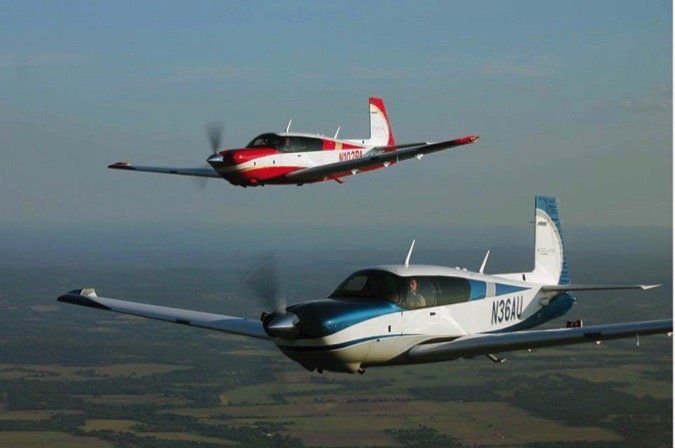A nerdy parlor game for aviation obsessives is to ponder how much further Mooney can stretch its decades old tube-and-sheet design into yet another new product. In this report, we’re looking at the M20V Acclaim Ultra, and that leaves four more alpha designators for something new.
Although it’s really an incremental upgrade to the long-body M20 series, the Acclaim Ultra was a major certification project for Mooney at a time when we’re not seeing many of those—from anyone. The results inarguably make the Acclaim Ultra the fastest four-place certified single-engine piston airplane and not just by a little. The Acclaim goes head to head with both its normally aspirated sibling, the Ovation Ultra (see February 2018 Aviation Consumer) and both Cirrus models, the SR22 and SR22T which, together, constitute the current market leaders. That puts the Acclaim into a niche within a niche—a slice of buyers who want speed, but care less about cabin size or payload. Pricewise, at $789,000 base, the Acclaim invoices below the typical Cirrus models.
Long Bodies
The M20V traces its DNA to Mooney’s first all-metal models that then and now combined a hell-for-strong welded-steel cabin cage with a traditional riveted monocoque after section. The Ultra twins owe their stretched cabins to one of Mooney’s ill-starred dead ends: the Porsche-powered PFM. Although the engine was disastrous, the airframe endured and became what’s known as the long-body airframe.
That design matured into the Lycoming-powered Bravo and, in 1994, the more successful M20R Ovation. A combination of market timing, a good economy and credible performance made the Ovation a hit for Mooney. But the company’s 1997 attempt to follow that with a revival of the turbocharged short-body M20K, the Encore, was another anemic seller.
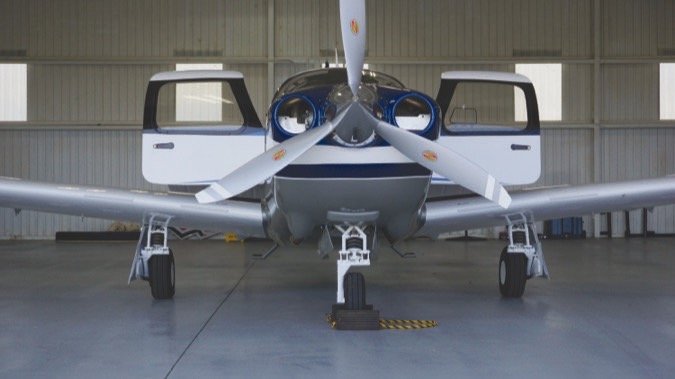
In 2006, Mooney addressed that by essentially turbocharging the Ovation with Continental’s 280-HP TSIO-550-G. This became the Acclaim and a couple of years later, with drag cleanups, it morphed into the Type S, which Mooney rightfully claimed was the fastest piston single.
The 2008 downturn ended Mooney production and, except for parts support, the company once again went into stasis until the China-based Meijing Group bought it in 2013. An infusion of cash funded another soon-to-be stalled project, the M10 trainer, a major redo of the long body and modernization of the factory.
Cosmetically, the airframe doesn’t look much different, save for the new door on the pilot’s side. But this proved a major certification project for Mooney, requiring two years to massively rejigger the welded cage to carry flight loads around the new door opening. And thanks to the composite experience gained through the M10 project, the forward cabin is now skinned with a fiberglass composite shell that may eventually evolve to carbon fiber.
The shell, which is clipped to the steel cage, has implications for assembly efficiency because it allows technicians unrestricted access to install wiring, hardware and fixtures before the cabin is enclosed. That squeezes hours out of the build time and chips away at production costs.
For pilots, the new cage and shell offer stiffer composite doors whose openings are four inches wider and an inch-and-half taller. The doors also get new latching mechanisms and tasty brushed aluminum handles.
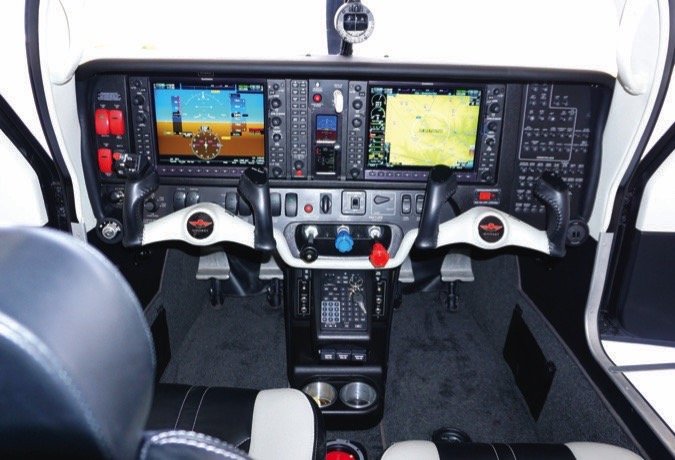
The Same But Different
The airplane sports dozens of less obvious improvements, including a carbon fiber cowl, gear doors and wingtips and drag cleanups, including a gap seal for the flaps. Mooney has always been obsessive about flush riveting and still is. Lee Drumheller, who sells Mooneys for Fort Lauderdale’s Premier Aircraft Sales, likes to point out the flush-riveted aerodynamic housing around the fuel vents. “No one else does that,” he says.
Mooney’s production chief, Rob Dutton, says the company has nicked hundreds of hours out of production time, but the airplanes are still a complex build. The wing is a giant, single-piece assembly with a riveted spar that would do a suspension bridge proud. The M20s still have wet-wing fuel tanks, but now they’re sealed with improved compounds intended to last longer before resealing.
The control circuitry is the same steel tubes Mooney has always used, yielding a precise if occasionally stiff control feel. The gear system is similarly tube driven via an electric motor in the cabin center section. Along with the Beechcraft design, this system has proved to be the most reliable in general aviation and is tolerant of less-than-perfect maintenance. Same for the flaps. They’re electrically activated with a ready-to-the-hand flap-shaped toggle on the panel with presets for takeoff and landing.
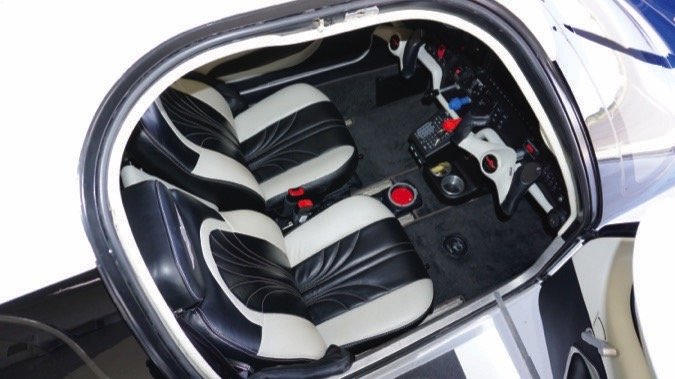
And while we’re on the panel, both Ultras have a new version of it that includes reorganized switchology with rockers rather than toggles. Critical items—master, alternator field and emergency bus—have red rockers on the far left, while everything else is black. Exterior lights are on the overhead; not my favorite. The panel is we’ll organized, but because of its limited size, some switches are obscured by the yoke.
As does about every other new airplane, the Acclaim Ultra has Garmin’s G1000 NXi. (See February 2017 Aviation Consumer for a full review.) This system has faster processing for a quicker startup and almost instant graphics refreshing. The displays are brighter and crisper and Garmin seems to have simplified the operating logic.
The NXi is fully coupled to the GFC700 autopilot, with a vertical control panel situated between the two display screens. The autopilot has envelope protection for overbanking and overspeed, but it doesn’t have the blue bail-me-out righting button pioneered in the Cirrus Perspective version of the G1000. The GFC700 has a reputation as the best new autopilot in GA and it’s deserved. It allows flexible aircraft control and the ride is silky smooth.
The Ultras are so loaded up that there aren’t many options, avionics wise or otherwise. For ADS-B In and Out, the airplane has the GTX345R along with the GDL69A for XM data. For $16,720, a buyer can add the GTS800 active traffic system, but Drumheller says few buyers do because ADS-B traffic performs so well.
Also on the option menu is FIKI-approved TKS and air conditioning. But because of the weight hit, that’s an either/or, not both. The AC is a $28,900 option with a 66-pound penalty. TKS weighs 95 pounds fully charged and adds $64,990 to the invoice. Surprisingly, Drumheller says neither option is particularly popular, especially in his southeastern territory where icing is less of a concern. And with the second door, holding it open for a cooling breeze during taxi may be a suitable alternative to AC. For an additional $10,000, Mooney offers what it calls Fill and Fly. It covers all the maintenance and consumables except fuel for three years or 300 hours, whichever comes first. That includes annuals and adding up the numbers, it strikes me as a good value. Even a new airplane can easily have a $3000 annual.
No Heavy Hauler
Mooney’s turbocharged models have never been payload workhorses and neither is the Acclaim Ultra. With AC, the demonstrator I flew had an empty weight of 2511 pounds for a useful load of just 857 pounds on a max weight of 3380 pounds. Fill it with 89 gallons and the airplane has a payload of 323 pounds. Without the AC, it would be 389 pounds. That makes it a two-people-with-baggage airplane. Down fueled to, say, 50 gallons, you can put three people into the airplane, with moderate baggage. That’s three hours at middling power settings or four at economy speeds.
Obviously, this is a significant compromise against the Cirrus SR22T, which claims best-case useful loads of 1248 pounds. In the real world, it’s less than that. But with three hours of fuel, plus a reserve, the Cirrus can carry four people. The tradeoff is the Acclaim gets there a little faster and/or goes a little farther because of its higher cruise speed.
Oxygen—a 77 cu. ft. system from Precise Flight—is standard equipment on the Acclaim, while it’s an option in the Ovation. That assumes owners will want to climb into the high teens or even up to the airplane’s maximum certificated altitude of 25,000 feet. Some owners clearly do that, but on our trial flight, Drumheller pointed out that the Acclaim speeds along handily at 12,000 feet, sans sticking a plastic tube up your nose. There’s something to be said for that.
The M20V gets that performance the same way the Ovation does, with Continental’s IO-550 engine, the de facto standard these days for high-performance aircraft. The Acclaim’s TSIO-550-G has two intercooled Kelly Aerospace turbochargers. The specs claim the engine is turbonormalized, but I’d call it ground-boosted, delivering up to 34 inches of boost.
While the Ovation gets 310 HP from the IO-550, the Acclaim’s version is derated to 280 HP. If that sounds like the Ovation will out-climb the Acclaim, it will at sea level on a standard day, by a couple of hundred feet a minute. That advantage fades when the density altitude gets to about 7000 feet. The Acclaim maintains its rate; the Ovation doesn’t.
Flight Impressions

Lee Drumheller says the Ultra’s pilot-side door is a potent sales tool and it’s easy to see why. It eases ingress and when both doors are open, the cabin is airier and more comfortable, even if a little contortion is still necessary. The back seats are tight until the front seats are slid forward to the normal flying position. The new seats—built and upholstered in-house—are done up in leather similar to luxury sedans.
Flight handling of Mooneys hasn’t changed much since the Bravo days. Compared to a 201, the long bodies are stiffer in pitch due to the engine hanging so far forward. It takes a tug to pop the airplane loose on takeoff and a touch to keep the stall lady from squawking.
For landings, Drumheller reminded me that the way to land a long body is to neutralize the heavy forward pitch moment by running the electric trim full up during the flare. That produces near-perfect touchdowns every time.
The Acclaim climbs briskly at about 1100 to 1200 FPM to as high you want, with good visibility over the nose at 120 knots cruise climb speed. Although Mooney lowered the glareshield in the new models, the view forward isn’t as expansive as a Cirrus or a Diamond. That’s a consequence of the small frontal area that gives the airplane its speed.
And the speed is impressive. We climbed to 13,500 for a speed check—about 10 minutes—and noted 206 KTAS, leaned 50 rich of peak at 21.9 GPH. That’s a little slower than the POH numbers, but also not a practical fuel burn. On the economy side, at 50 degrees lean, the Acclaim trued at 172 knots on 11.1 gallons. That equates to seven hours of endurance and nearly 1200 miles of still-air range, with reserve.
If you want speed and economy, you’ll have to take the Acclaim high. At 25,000, it can do 216 knots on 16 GPH, for a still-air range of 1000 miles-plus. But only with two people and light bags. That’s probably the buyer Mooney will have to find for this airplane and/or people who just don’t like the Cirrus for whatever reasons. The Mooney offers a $100,000 lower price tag for comparably equipped airframes, but for someone who can afford to write a check for these aircraft, I’m not sure if price sensitivity is an issue. Drumheller says it is not between the Ovation and the Acclaim. Buyers who want to go fast just want to go fast and they’ll pay for the hardware to do that.
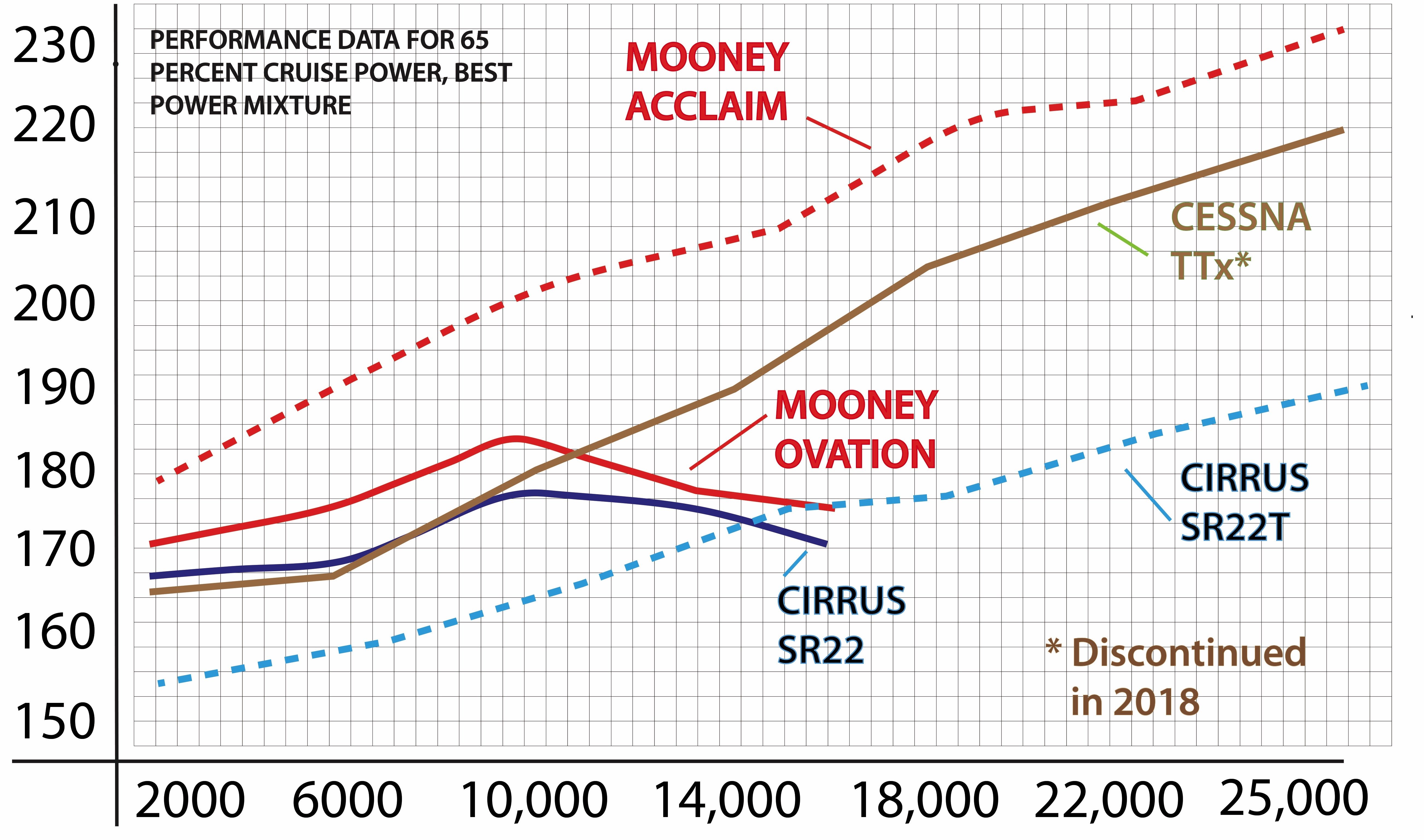
Acclaim: Faster At All Altitudes
The Acclaim’s performance profile, top chart, is nothing if not flexible. It’s faster at all altitudes than anything in the four-seat high-performance class, although it gives up some climb performance to the Ovation at lower altitudes.
With tanks full, it’s a two-place airplane with a moderate baggage load. Three people will be a push, leaving payload enough for about 720 miles of still-air flying with a 45-minute reserve, as shown in the chart below. Those numbers assume best economy cruise below the oxygen altitudes.
For owners who don’t mind using a cannula or mask, the Acclaim’s performance reward is 230 knots-plus in the flight levels, where it leaves the competition far behind.
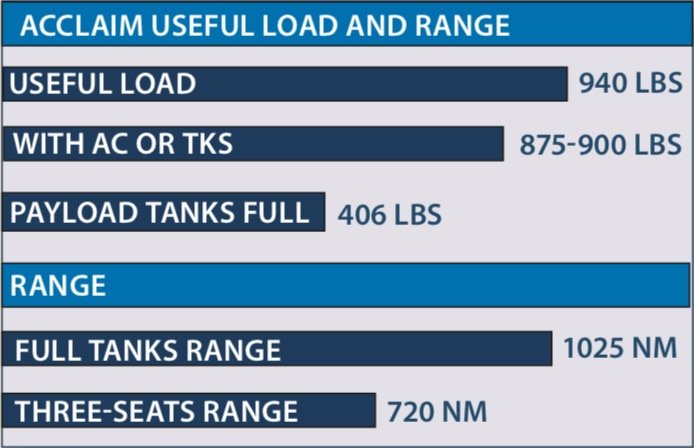
More Investment In Kerrville
Given Mooney’s string of bankruptcies, fire sales and musical CEOs, a buyer about to write a check for most of a megabuck for a new airplane might logically ask: Are these guys gonna survive?
The answer may reside in an unlikely place: A fenced-in cage at the back of Mooney’s main assembly hangar in Kerrville. From within comes the parts support for a fleet of more than 11,000 Mooneys, back to nearly day one.
Although that parts flow has been better in some years than others, support for the fleet has never dried up entirely and Mooney sales manager Jeff Magnus says the Meijing Group wants to keep it that way. Meijing, a China-based real estate developer, along with other investors, bought Mooney in 2013, renaming the company Mooney International.
The company admits to a capital infusion of at least $150 million, to include development of the now-shelved M10 project, factory improvements and the certification of the M20U and V models. It also funded a Chino, California-based design and development shop, which has since been shut down.
Magnus says the company is in the aviation business for the long haul and sees a profitable future when the long-awaited Chinese general aviation market potentiates. This remains an aspirational goal. A couple of M20s prepped for shipment to China were turned back into the U.S. market simply because China couldn’t readily process the certifications.

For the time being, the company is sustained by multiple revenue streams from spare parts and support, outside contract manufacturing for other aerospace companies and its own aircraft manufacturing.
In the current flat market, production at Mooney is about one airplane a month, but it hopes to reach as many as 30 a year within a year or two. “We think 50 a year is doable. The market can absorb that and that’s a sweet spot for us,” Magnus says. The longer view sees demand in China, if not for the M20 then for something else.
One something else was supposed to be the clean-sheet composite M10, a program that envisioned a fixed-gear trainer and a retractable cruiser. Mooney has indefinitely shelved that project in the face of weak potential demand.
The positive offshoot was that composite capability was moved to Kerrville and leveraged into building the composite cabin shell for the M20U and V. And Magnus says work done at Chino may yet find applications. “From the Meijing Group’s point of view, it just didn’t make sense to introduce three new airplanes. In a couple of years, you may see something similar to the M10 coming back,” Magnus said.
Meanwhile, he says the factory will begin supporting upgrades of older models with glass panels—Dynon is under consideration—and modern interiors provided as kits. Such packages, he says, would be provided to Mooney service centers for field installation.

